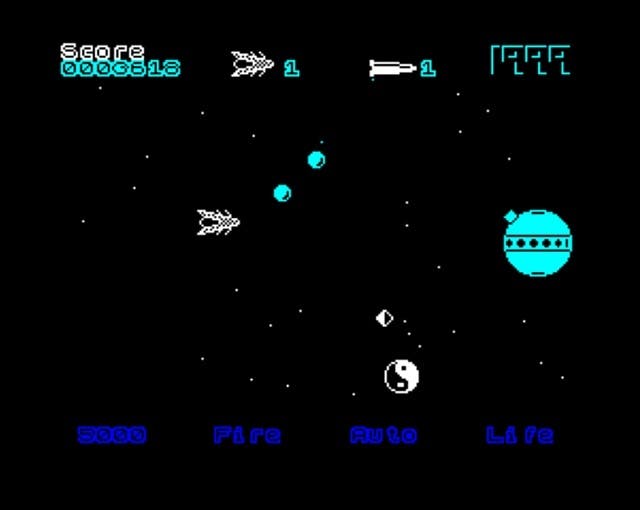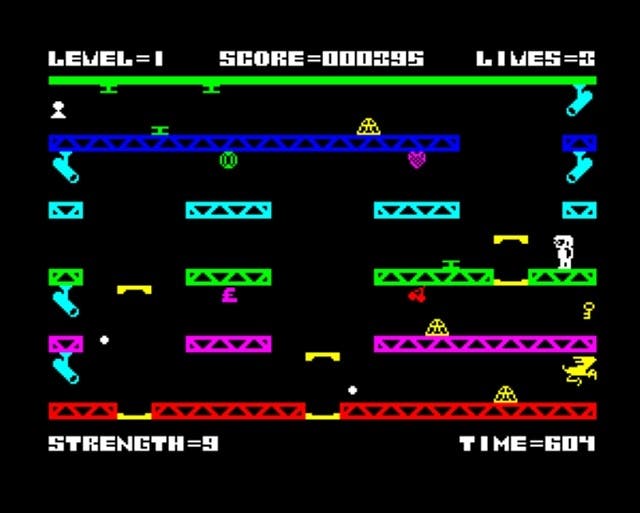Future Perfect
Sinclairvoyant?
The future will be a scary place. Well, no, that's not quite accurate - it'll be a scary place for a bit, then a rather quiet place. As we'll all be dead. Probably eradicated by one of several enticing options: total thermonuclear war (fried), wacky climactic changes (fried and drowned) or a fatal galactic event like asteroids smashing into Earth / the Sun exploding / aliens popping by on a madcap conquering spree (fried, drowned, exploded and then zapped into teeny-tiny gobs of flesh).
However, while this rotating orb remains in place, the future holds power for those who might predict it. Cynics and people with eyes may suggest fortune-tellers are mere fraudsters; skilled cold readers who ply their trade to keep the pay cheques fluttering in. But maybe the reality runs much deeper. Maybe these purveyors of precognition are just a smoke-screen for the real soothsayers - a cabal of powerful figures who seek to shape the world around us. Thanks to the acquisition of secret documents uncovered by the Knights Templar, Eurogamer:Retro can exclusively reveal details of an alleged Illuminati plot to broadcast visions of the future through the software of a rubber-keyed home computer.
Did Spectrum programmers really insert clues to forthcoming events in their games, or is the very idea as incongruous as silver bodysuits and nuclear toasters? We raided the World of Spectrum archives to find out.
Pre-Millennial

Our search began on the cusp of the twenty-first century. The countdown to the year 2000 was laden with prophecies of doom and horror, from the usual religious-themed cataclysms to sombre concerns about poor little computers getting all confused and deciding it's 1900. The British government even issued leaflets assuring us our vacuum cleaners wouldn't go mental after midnight. Could Crystal Computing's Bug Blaster game from 1984 have eerily foreshadowed these events? As players moved their purple triangle of truth from side to side, blasting amorphous green and blue shapes (perhaps representing bad journalism and weak science), were they unwittingly witnessing a withering critique of the hysteria which would surround the Millennium Bug? It seemed unlikely, but we'd merely scratched the surface.
Three years after Bug Blaster, another warning from the void appeared. After some time in the commercial wilderness, Summit Software's 1999 found its way onto a Your Sinclair covertape. Was it mere coincidence that this game appeared on The Universe's Biggest Selling Spectrum Mag®, or the work of a shadowy, invisible hand? Whatever the case, we were intrigued to discover that the release contained clear references to two millennial concerns, thirteen years before they occurred. The first, an oblique nod to the coming ubiquity of Prince's "1999" single, communicated via the loading screen placement of the game's title directly next to a huge purple planet. An accurate prediction, but one somewhat undermined by how spectacularly obvious it is.

However, 1999's content went much further, stating that the last days of the twentieth century would be humanity's last. A character named Dr Vargon would pilot his magnificent space wasp (yep) and terminate the human race. Nonsense, surely? The human race was neither exterminated during 1999, nor plagued by giant wasps - save for the giant hornets indigenous to Earth. Yet the game is somewhat tricky, perhaps alluding to the fact that the mysterious Dr Vargon had indeed planned to bring death to us all, but was blown up by some pesky space-diamonds. Space diamonds funded and launched by NASA? Perhaps.
Closer to home, we unearthed a number of uncanny social observations. 1994: Ten Years After stayed well clear of the millennium trap, choosing instead to focus on Orwellian surveillance nightmares. Indeed, the entire game is a nod to 1984, explaining: "Mr Orwell got it all wrong, not the principle, mind you, just the date." Prescient indeed, as the Manic Miner-esque gameplay features a central computer awash with personal details, security cameras at every turn and jelly-shaped robots. Still, two out of three isn't bad; although any clairvoyant credit regarding the sinister paths being taken by British authorities really ought to go George. But who published such a far-sighted game? Step forward, the aptly-named Visions Software Factory.
